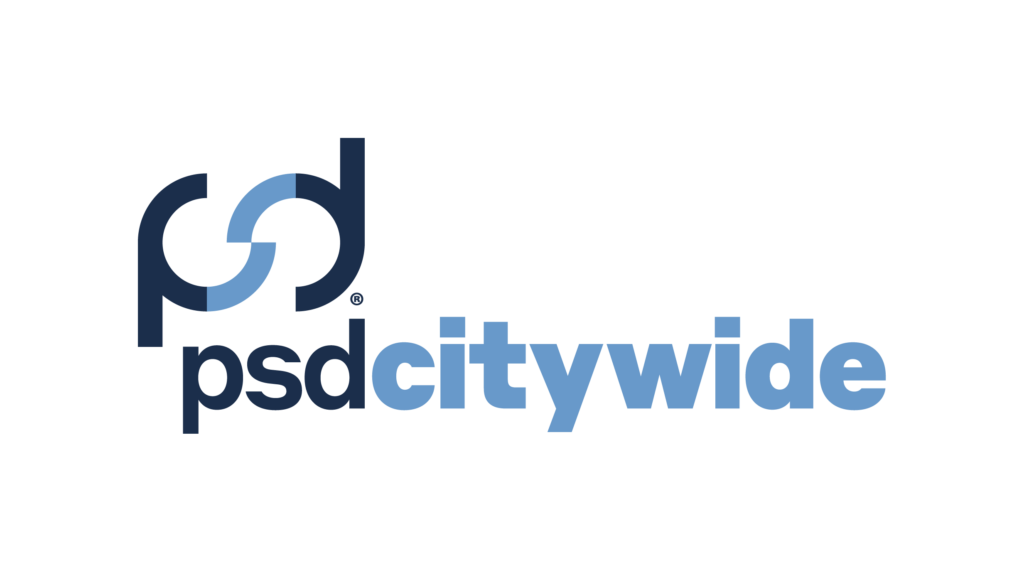Cities across Canada and worldwide are collecting vast amounts of local-level data to meet varying local, national and international challenges. Resilience, climate change and the “smart city” agendas are becoming critical points of action. From an economic development point of view, communities are no longer competing only with neighbouring municipalities, but indeed, with municipalities from across the globe. They are also looking to upper levels of governments for funding support, often competing with peer cities across a province, state or country.
Moving away from North America and Europe and into the Global South, cities and communities are often competing to receive funding from international financial institutions such as the World Bank. On all such agendas, global or local, data is critical. However, more data is not the answer. What cities truly need is high calibre and globally comparable municipal level data.
… more data is not the answer. What cities truly need is high calibre and globally comparable municipal level data.
In 2014, the Toronto-based World Council on Data (WCCD) was formed with a singular purpose: to harness globally comparable, and independently verified city data to create the sustainable, smart and resilient cities of the future. Having led on the development and publication of ISO 37120 – the first international standard for city data – the WCCD tested this global first with 20 cities across the world.
Today, the WCCD is a worldwide network of 100 cities, across 38 countries, all driven by a shared dedication to sustainability, resilience and the smart city agenda and united by what is quickly becoming the highest calibre, city-level data, worldwide. Within Canada, fifteen cities are part of this network – all reporting ISO 37120 city data at the highest certification levels. Through the “Data for Canadian Cities Pilot Project” – which will be implemented with the Federal Ministry of Infrastructure and Communities – this number will double in the next year. Not only will this high calibre data help to drive better city services and quality of life, but it will also be infinitely useful to understand where both private and public sector money should best be invested.
CREATING SMART + RESILIENT + SUSTAINABLE CITIES: A GLOBAL CHANGE
While progress is being made, the global buzzwords of “resilience” and “smart” are challenging municipal administrators and politicians to tackle these crucial agendas that have been very difficult to quantify. Policy still lingers at a high qualitative level. Soon after the launch of ISO 37120 in 2014, the first ISO standard for cities, it became apparent that cities were interested in looking beyond its 100 quantitative indicators and 17 thematic areas. While the need to take action on the resilience agenda was apparent – primarily due to an increase in extreme weather events, for example – the smart city agenda has been slightly less focused.
Rising to this challenge, the WCCD coordinated its efforts with the 28 members of ISO Technical Committee 268 to create two new sets of globally standardized and comparable indicators for both “resilient cities” (ISO 37123) and “smart cities” (ISO 37122).
MEASURING CITY RESILIENCE
Over the past decade, “resilience” has become a buzzword in cities worldwide. The advent of several global initiatives to try and mitigate the urgent shocks and chronic stresses that cities face only underscores the immediacy of the problem. However, with a lack of quantitative indicators for year over year internal analysis, not to mention an inability to compare and draw lessons across cities in this absence of standardized data, several of these initiatives have come up short. A plan for resiliency is undoubtedly necessary for a city or community. However, without quantitative metrics to understand preparedness, response, and potential rebuild following an extreme event, how effective can that plan be?
Responding to this challenge, a new, WCCD-led ISO standard will be imminently published. ISO 37123 – Indicators for Resilient Cities – will focus on helping cities to generate globally standardized, independently verified, and comparable data. This new standard will shift the focus on resilience from being a laudable, city-wide goal to something imminently actionable. Designed with critical input from the United Nations Office for Disaster Risk Reduction (UNDRR) a strong partner of the WCCD, ISO 37123 was built from the ground up – combining local experiences, with global knowledge.
As the excitement grows in response to this latest, “global first”, insurance and reinsurance companies are starting to see ISO 37123 as a clear and concrete way in which to engage cities in a direct conversation around risk assessment, mitigation and management. A set of standardized numeric indicators, which measure year over year progress serves a City Manager well when he or she is engaging with insurers to negotiate annual premiums. Challenges can be identified, baselines established, improvements can be demonstrated, and successes can be highlighted. Conversely, this data set allows for an insurance company to not only view a city or community as data-driven, but also proactive in its preparedness and response to the shocks and stresses that could affect insurance premiums.
UNDERSTANDING A “SMART CITY” AS PRIMARILY CITIZEN-FOCUSED
The concept of a “smart city” is one that city leaders face with increasing frequency. Primarily driven by an increase in city-specific technologies and a few hegemonic, global players, the concept of a smart city can be described as even more nebulous than the idea of a resilient city. Cities have been adopting “smart city” tech solutions without understanding how they might interact with later technological developments, not to mention interoperability with solutions developed by other firms. Smart cities quickly became technology-driven. However, what is needed is a technology agnostic, city-wide view discussion. Compounding this problem is the lack of data necessary to inform the adoption of city-wide solutions. More recent issues of “data privacy” are causing city leaders further concern about what might be next in the absence of a well formulated data governance framework for their city.
With the same bottom-up approach as ISO 37120, the WCCD once again led the city-driven development of ISO 37122, all the while underlining that a “smart city, is a data-driven city.” Published in May 2019, and paraphrasing a more technical definition, ISO defines a smart city as one that encourages collaboration, cross-departmental engagement, and the use of IT to deliver better services and quality of life to city residents. In implementing this new standard, a set of early-adopting cities across Canada, the United States, and Europe are now able to re-focus the concept of a smart city back on citizens and residents – in effect, allowing city leaders to embrace a city-specific, city-wide set of solutions that will benefit their primary constituents, that is, the people who call that particular city home.
BEYOND SERVICE DELIVERY AND TOWARDS INVESTABLE CITIES
In the Autumn of 2017, Amazon announced that it was looking for its second headquarters (HQ2) and that bidding was open to North American cities. The Request for Proposal (RFP) was extremely detailed, and city-level data was at its core. However, this wasn’t merely a request for city financials or tax rates; it went far deeper – specifically towards a city’s quality of life and service delivery levels. It was clear that Amazon was interested in how safe a candidate city was, and, for example, the reach of its public transport network. The RFP also went beyond classic talent indicators such as the number of higher education degrees (an ISO 37120 indicator) or STEM degrees. Indicators such as student/teacher ratio in primary schools and green space were also relevant. Why? Because Amazon was looking to locate HQ2 in a livable, as well as a sustainable city, mainly because 50,000 employees would potentially move there, and Amazon places a high premium on talent retention.
With cities across North America bidding for HQ2, Canadian cities needed to showcase themselves as safe, sustainable and green, not only anecdotally, but with hard numbers.
Toronto Global – in charge of the Toronto-area bid – immediately realized that the WCCD’s ISO 37120 “apples to apples,” comparative data would be a tremendous advantage in showcasing Toronto’s suitability as a location for HQ2. Toronto had been certified WCCD ISO 37120 Platinum since 2014, providing a wealth of data to showcase its livability. Working with WCCD staff, the team from Toronto Global embedded comparative WCCD ISO 37120 data within the RFP, showcasing Toronto’s strengths in comparison to several American peers. The result; Toronto was shortlisted as a finalist for HQ2, and it’s data-driven, open bid document continues to draw countless enquiries from companies looking to relocate to Toronto.
Beyond the HQ2 example, high-calibre and comparable data are helping to attract investment in cities worldwide. Numbers don’t lie – and figures that sit outside of city halls, that are ISO certified, and independently verified, can only create a more trusted and compelling argument to investors, both from the private and public sector.
LOCALIZING GLOBAL GOALS – THE SUSTAINABLE DEVELOPMENT GOALS AND 2030 AGENDA
A global transformation has occurred that positions cities at the core of the current, worldwide development agenda. Urbanization is one of the most significant trends of the past and present century, providing the foundation and momentum for global change. The shift towards an increasingly urbanized world constitutes a transformative force which can be harnessed for a more sustainable trajectory, with cities taking the lead to address many of the global challenges of the 21st century, including poverty, inequality, migration, unemployment, environmental degradation, and climate change. City leaders have become a positive and potent force for addressing sustainable economic growth, development and prosperity, and for driving innovation, consumption and investment in both developed and developing countries.
Economic growth and development have usually been closely associated with the performance of nations. In recent decades, cities have emerged on the global stage as economic powerhouses, engaging in world markets to create more jobs, to attract global talent and investment, and to spur long-term, sustainable economic growth. Cities provide the economic basis for national and international growth and innovation. They are the most common sites for business investment, provide the institutional and economic basis for higher academic and vocational education, and are prominent sites for research and development (R&D). Cities are now responsible for more than 80 percent of global GDP. The prosperity of nations and regions is, more than ever, dependent upon the economic performance of cities.
While cities were not explicitly represented in the Millenium Development Goals, one of the 17 Sustainable Development Goals (SDGs) for the 2030 Agenda is dedicated to addressing cities – Goal 11: Make cities and human settlements inclusive, safe, resilient and sustainable. The representation of cities as a specific goal and focus in the post-2015 Development Agenda is recognition of the pivotal role of cities as a transformative influence in building sustainability.
Since 2017, initially under the invitation of the Office of the UN Secretary-General and published at the UN High-Level Political Forum, the WCCD has mapped each of the 100 indicators of ISO 37120 to the SDGs and has showcased the progress of over sixty cities worldwide. The 2018 edition of this report was launched with the Deputy Mayor of Los Angeles in January 2019. To further this agenda, in July 2019, at the United Nations High Level Political Forum in New York, the WCCD launched a partnership with the OECD to promote this work in cities across the world, with an emphasis on localizing the SDGs, in partnership, across and beyond OECD countries.
Through all of this work, what has become apparent is that the role of cities in reaching the 2030 targets goes well beyond a singular SDG. Instead, cities are a distinct level of government which help to drive change across all 17 SDGs. However, to drive change and embrace a global set of goals at the local agenda, high-calibre and globally comparable data are essential to both city leaders and citizens. The 2030 Agenda and SDGs will rise or fall in the cities across the world, and local data is essential to meeting these targets.
FROM CANADA TO THE WORLD – CITY DATA AS THE UNIVERSAL LANGUAGE
For cities to drive progress on local, national and international agendas, effective management and evidence-based policymaking is essential. Cities and communities in Canada and around the world have no shortage of data, yet what is truly needed to drive sustainability, prosperity, inclusivity, and resilience is high calibre, globally standardized and comparable municipal level data. Ensuring that “no one is left behind” in cities and communities is perhaps the most significant challenge that cities are facing. Data help to drive a more inclusive prosperity in cities by empowering a more transparent governance. Through the use of the WCCD framework, cities continue to embrace our oft-repeated strapline that “data is the universal language.” They are charging ahead and working to change the lives of all of their citizens – underpinned by local-level data as the starting point.
PATRICIA MCCARNEY is President and CEO of the World Council on City Data (WCCD) and Professor of Political Science and Director of the Global Cities Institute at the University of Toronto. Professor Patricia McCarney received her Ph.D. from M.I.T. in 1987. She has also served as Associate Vice President, International Research and Development at the University of Toronto.
Leading the World Council on City Data, Patricia McCarney is building a globally standardized data base for cities worldwide inviting cities to build city data in conformity with ISO 37120, the first international standard for city data, the recently published standard, ISO 37122, Indicators for Smart Cities and soon to be published standard, ISO 37123, Indicators for Resilient Cities.



